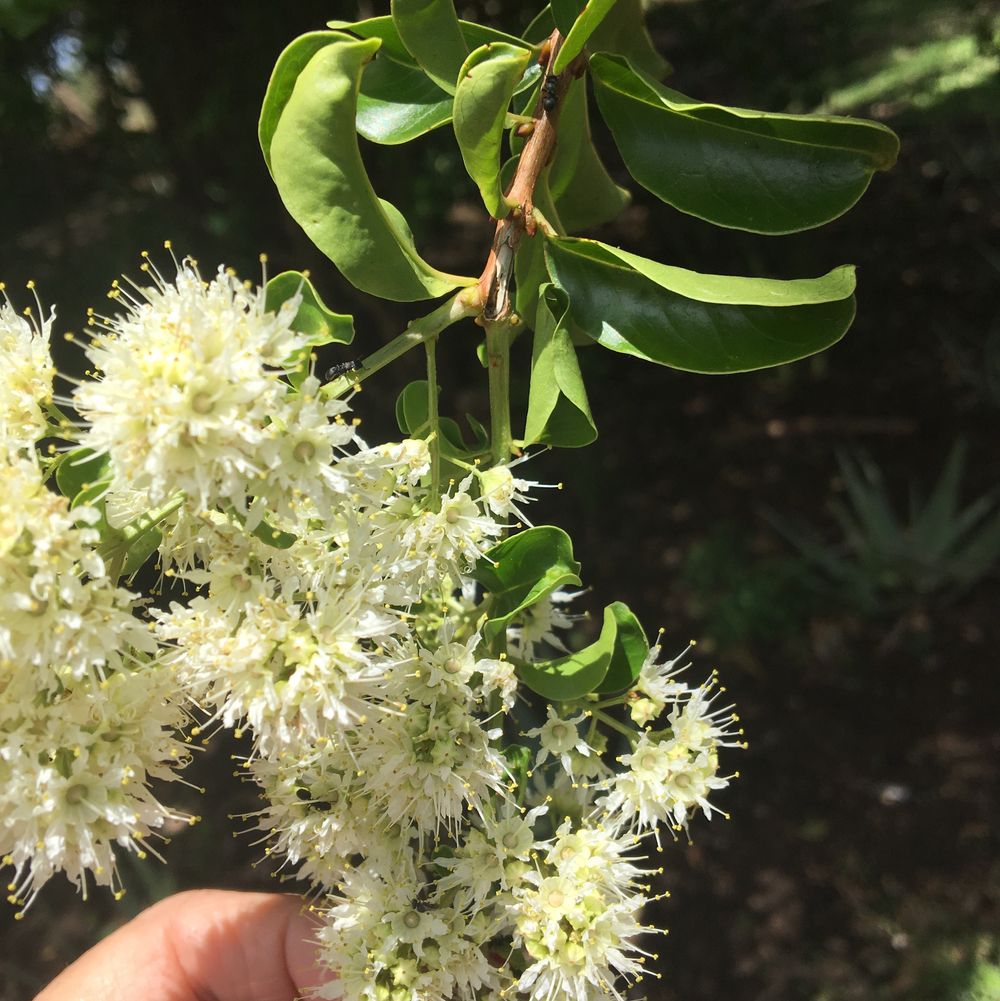Henna
(Lawsonia inermis)

Description
Lawsonia inermis, also known as hina, the henna tree, the mignonette tree, and the Egyptian privet, is a flowering plant and the sole species of the genus Lawsonia. It is the source of the dye henna used to dye skin, hair and fingernails, as well as fabrics including silk, wool and leather. Henna is a tall shrub or small tree, standing 1.8 to 7.6 m tall (6 to 25 ft). It is glabrous and multi-branched, with spine-tipped branchlets. The leaves grow opposite each other on the stem. They are glabrous, sub-sessile, elliptical, and lanceolate (long and wider in the middle; average dimensions are 1.5–5.0 cm x 0.5–2 cm or 0.6–2 in x 0.2–0.8 in), acuminate (tapering to a long point), and have depressed veins on the dorsal surface. Henna flowers have four sepals and a 2 mm (0.079 in) calyx tube, with 3 mm (0.12 in) spread lobes. Its petals are obvate, with white or red stamens found in pairs on the rim of the calyx tube. The ovary is four-celled, 5 mm (0.20 in) long, and erect. Henna fruits are small, brownish capsules, 4–8 mm (0.16–0.31 in) in diameter, with 32–49 seeds per fruit, and open irregularly into four splits.
Taxonomic tree:







